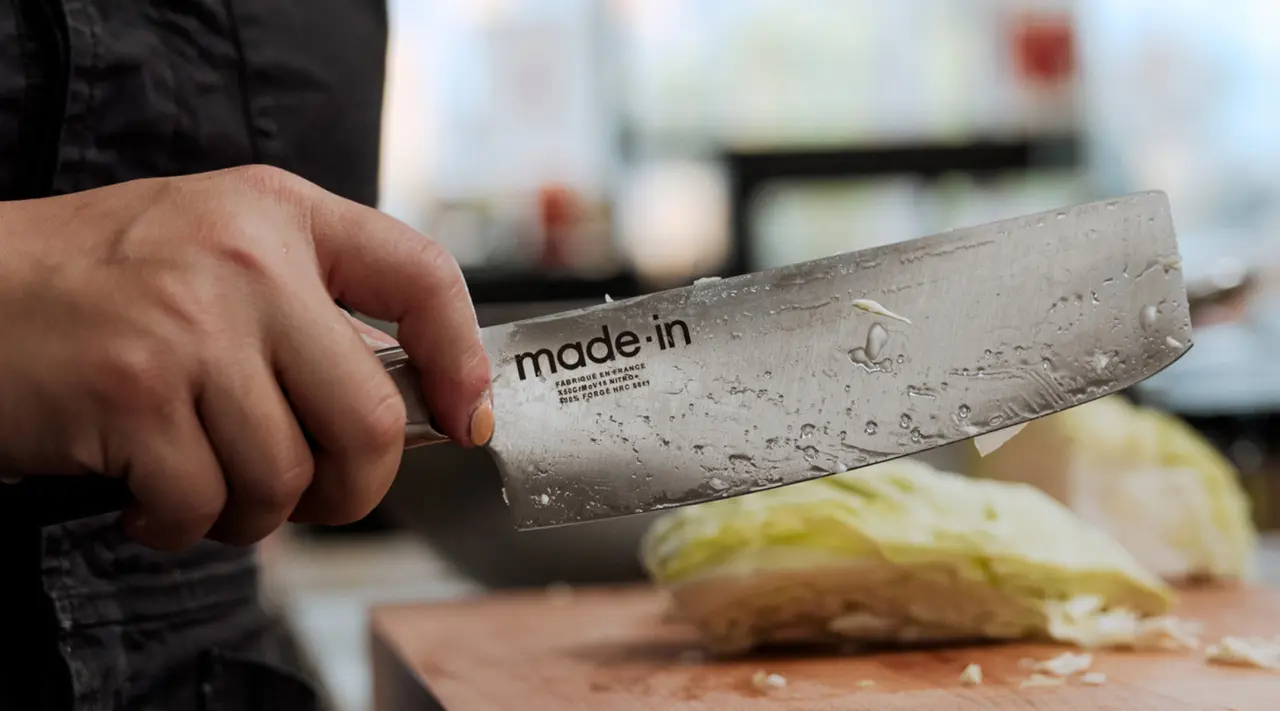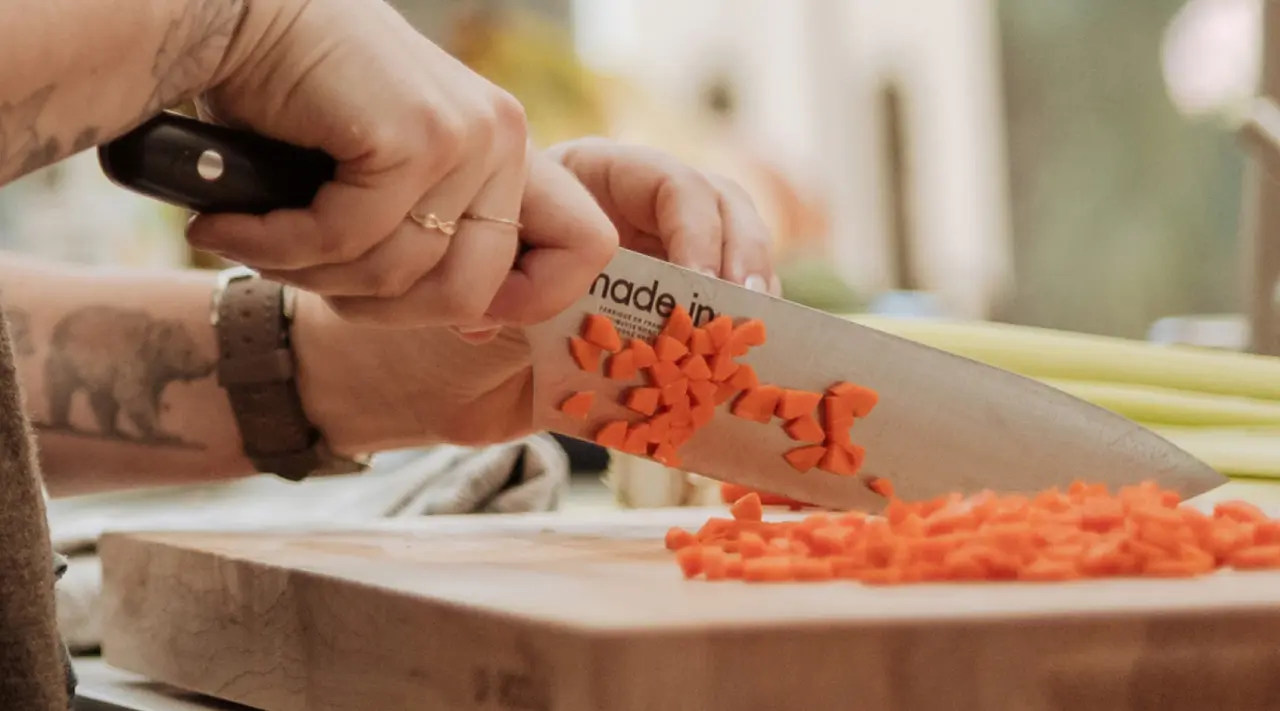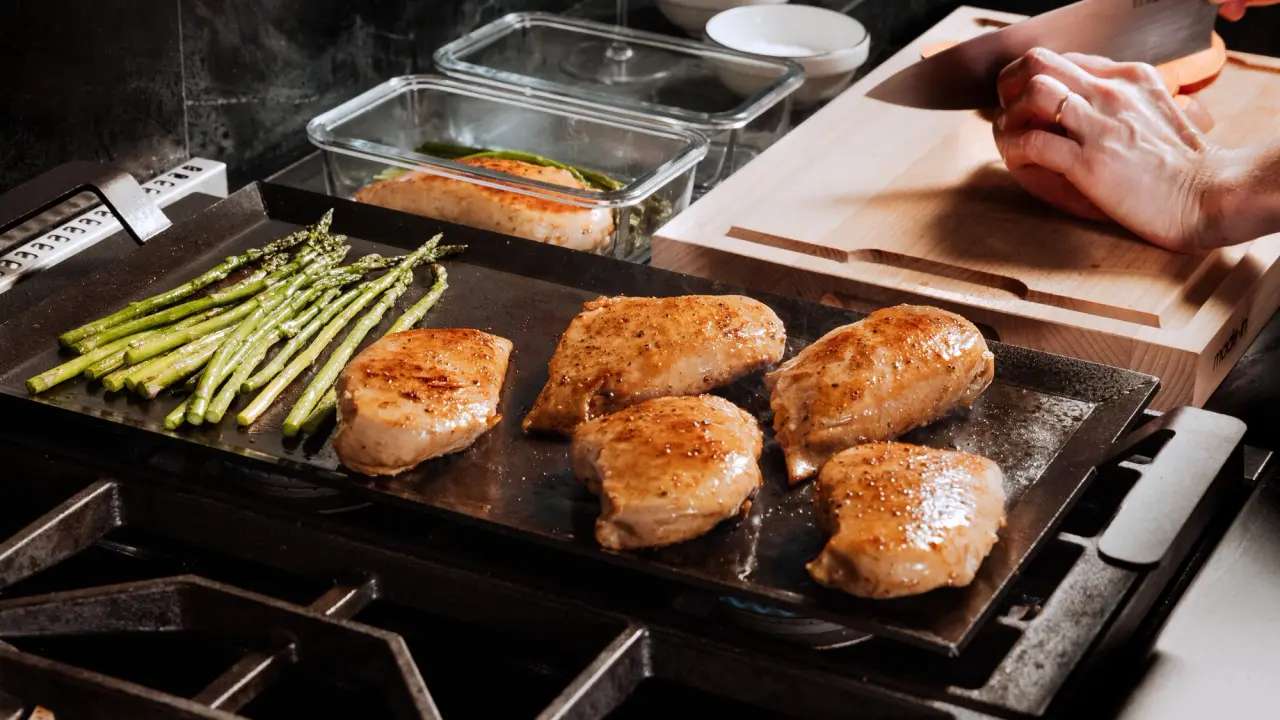As any home or professional chef will tell you, not all knives are created with the same use case in mind. Some are better suited for dicing and mincing, whereas others may be better for precision cuts and deboning. Two blades that perfectly illustrate this are the nakiri, a traditional Japanese blade typically used for vegetable work; and the chef's knife, a staple, Western blade used for a variety of kitchen tasks.
So, what's the difference between these two knives—and when should you use either in your own kitchen? We're covering all this and more below, so get ready to sharpen up your knife use knowledge.
Understanding the Nakiri Knife

A staple in Japanese cuisine, the nakiri knife is immediately recognizable thanks to its thin, rectangular, and blunt-ended blade. The flat shape and thin cutting edge make it an ideal knife for vegetable work—in fact, its design is intended for cutting straight through thick vegetables (like eggplants, zucchini, or celery stalks) in an up-and-down motion, similarly to a cleaver.
Compared to a chef knife, a nakiri knife typically weighs less and has a shorter blade—our Nakiri is 7oz with a total blade length of 6.38", while our Chef Knife is 8oz with a 8.5" blade.
Advantages of Nakiri Knives
Now that you have a better understanding of what nakiri knives are what they’re typically used for, let's dive into some of the many benefits of using this type of knife.
Dedicated Use Case
While having a versatile knife that can handle various aspects of prep work is a benefit, there's also something to be said for knives with a single, dedicated purpose. Joining the ranks of boning and carving knives, the nakiri knife is a must-have not for its versatility, but for its single, dedicated use case for which it was designed: cutting vegetables. Wether you're dicing an onion for a sauce, mincing celery for mirepoix, or roughly chopping a potato for soup, the nakiri can get it done flawlessly.
Easy Cutting Motion
Because the nakiri is always used to chop in a straight up-and-down motion, there is no special skill required to use it effectively. This makes it one of the most user-friendly knives available, with little to no learning curve.
Small, Lightweight Construction
Compared to many other knives (including the chef knife), nakiris are relatively small and lightweight. This makes this shape easier to work with, especially for chefs with smaller hands.
Understanding the Chef Knife

If you conjure a mental picture of a kitchen knife, chances are you'll think of a chef knife. Featuring a curved blade optimized for the rocking method of cutting, chef knives are as all-purpose and versatile as it gets. Well-suited for anything from breaking down a chicken to finely mincing herbs for a salad, chef knives are designed to handle just about anything you throw at them.
Compared to a nakiri, the chef knife is both longer and heavier, often measuring 8-14 inches and weighing up to 11 ounces (ours is 8oz with a 8.5" blade).
Advantages of Chef Knives
Chef knives are like a good frying pan—no kitchen is complete without at least one. Here are a few more reasons why you should add a chef knife to your array, if you haven't already.
Durability
Where nakiri knives feature thin blades, chef knives often have thicker blades—meaning they are more durable and less likely to incur chips over time with proper care. This also means your knife can last longer between honing or sharpening sessions.
Size Options
Since they are such staples across skill level, chef knives are offered in an array of size choices, from as small as 6" to 10" or larger. This suits chefs with small or large hands and ensures comfortable cutting no matter what. Ours are available in a standard 8", as well as a slightly smaller 6".
Varied Uses
Compared to the nakiri knife—which has traditionally been used for slicing vegetables—the chef knife is much more versatile. Thanks to its curved blade that's optimized for a rocking motion style of cutting rather than just straight up and down, it can be used for just about any cutting task in the kitchen—ranging from chopping and mincing to slicing and dicing.
Nakiri vs Chef Knife: Which Do You Need?

Chef knives and nakiri knives are in different knife categories altogether. While you can use a chef knife for vegetable work or a nakiri for chopping herbs, it's often better for serious cooks to have speciality tools for dedicated applications—i.e., a knife only used for vegetable prep.
If you're just starting your journey in the kitchen, we recommend starting with a solid chef knife and expanding your collection from there. A speciality knife like the nakiri absolutely has its place in knife collections of all sizes, especially if you work with a lot of veg or eat plant-based.
Ready to Chop?
Ultimately, we recommend thinking of nakiri and chef knives as complements, not competitors. These can both help you build out a well-stocked knife block that ensures you have the right blade for each of your needs and kitchen tasks, especially when they both feature full-tang, fully-forged French construction like our Chef Knife and Nakiri Knife.























